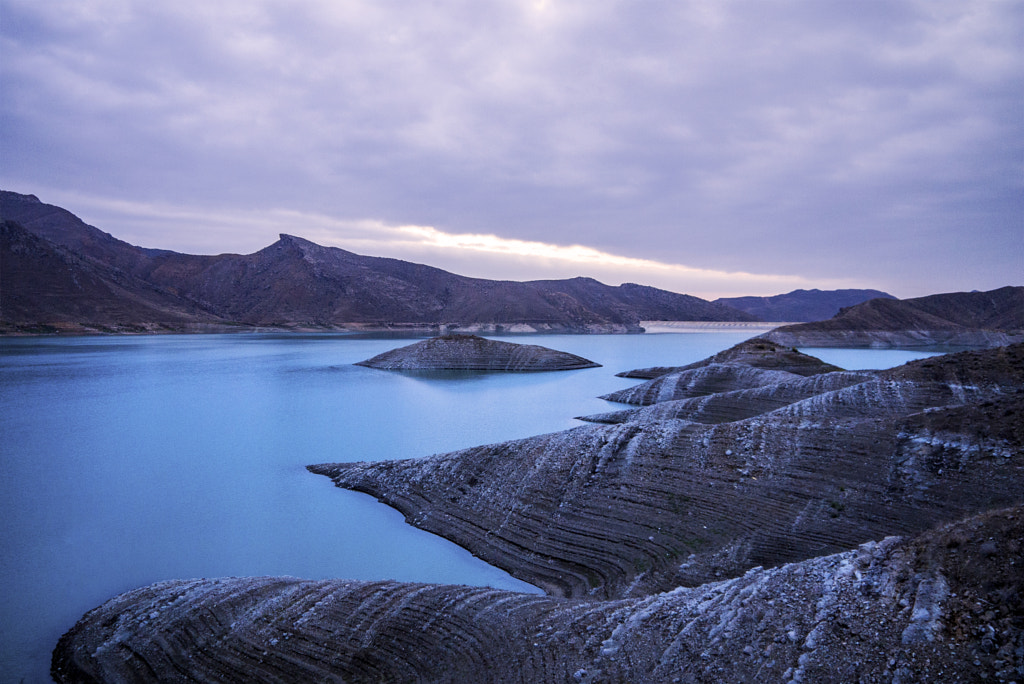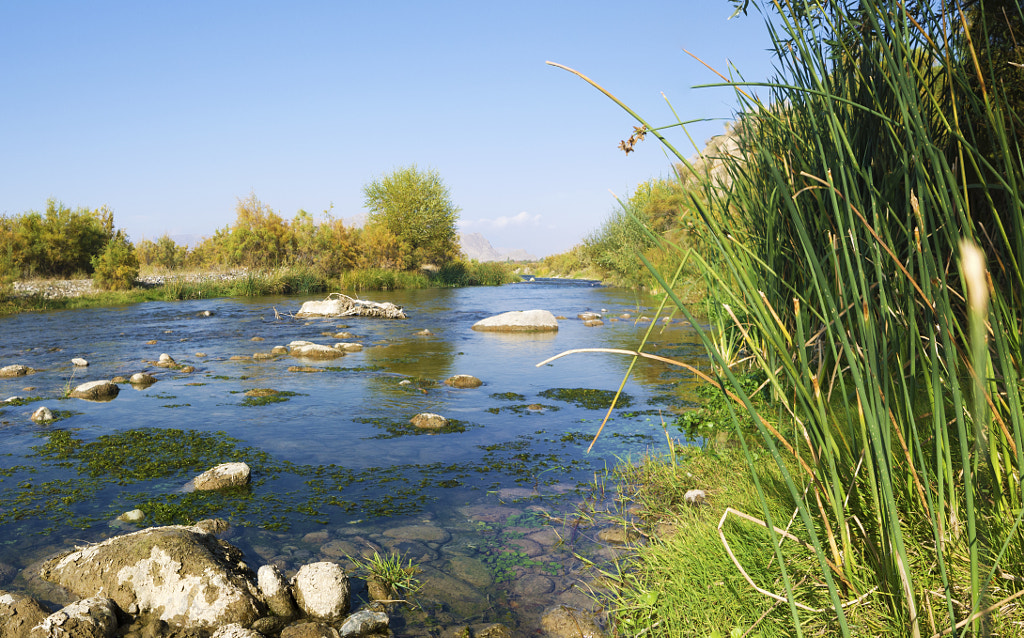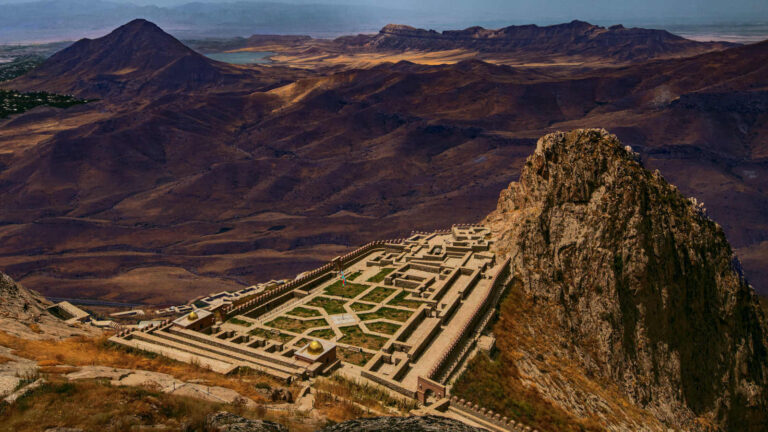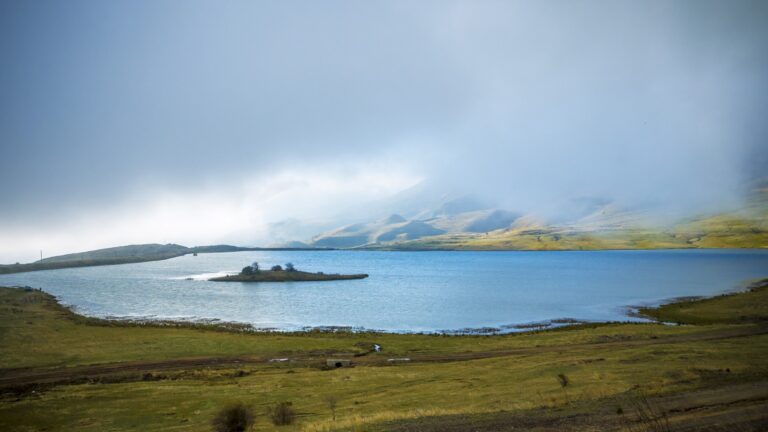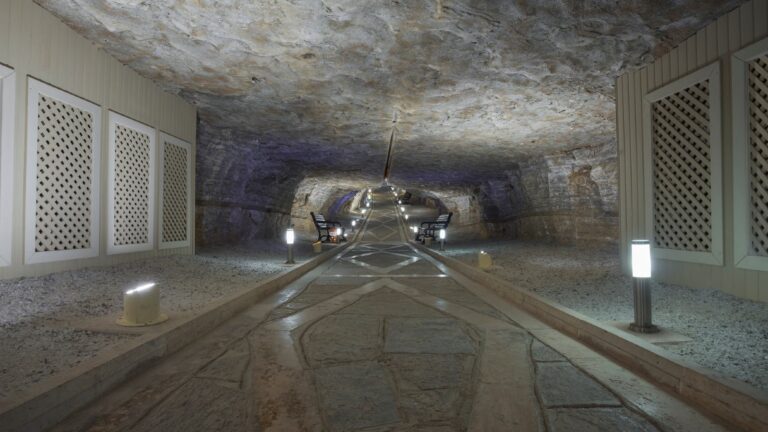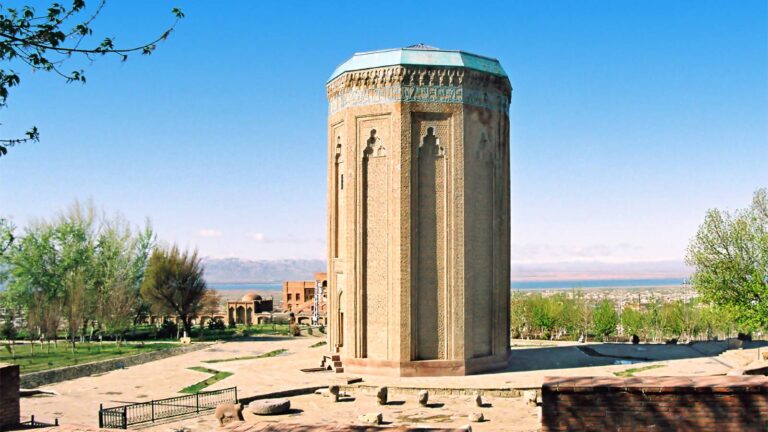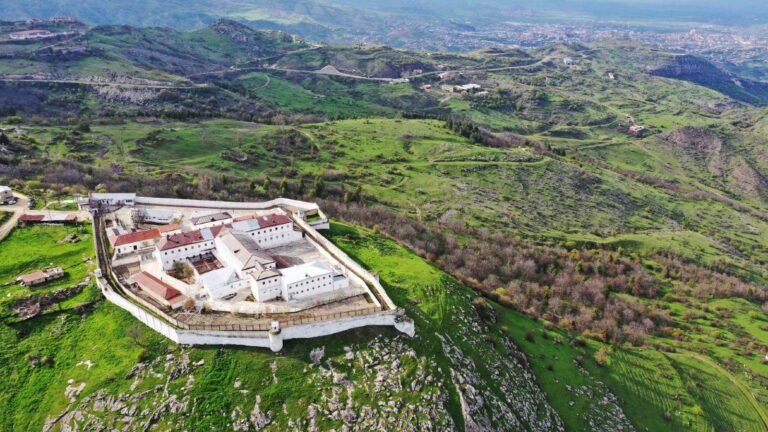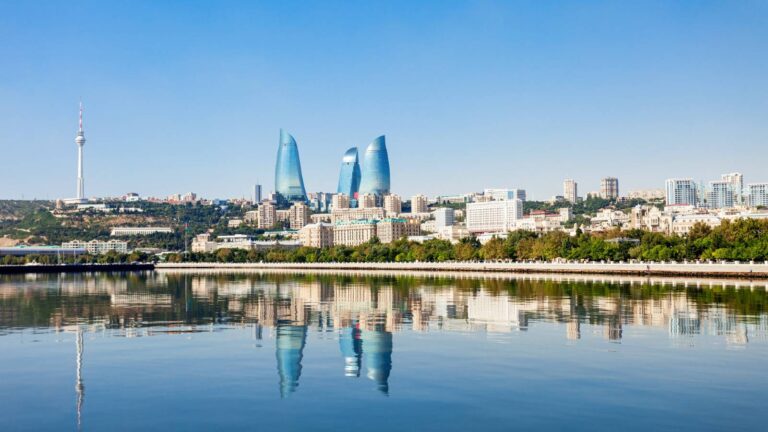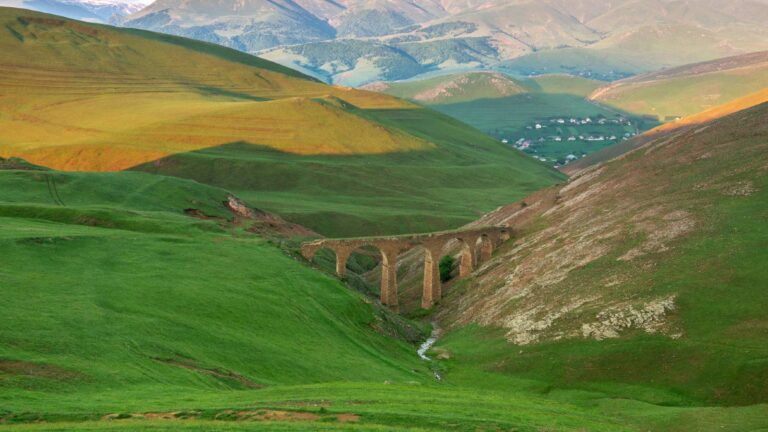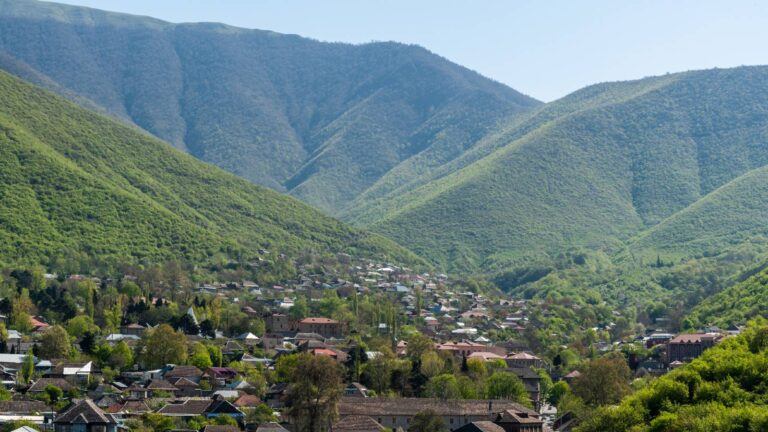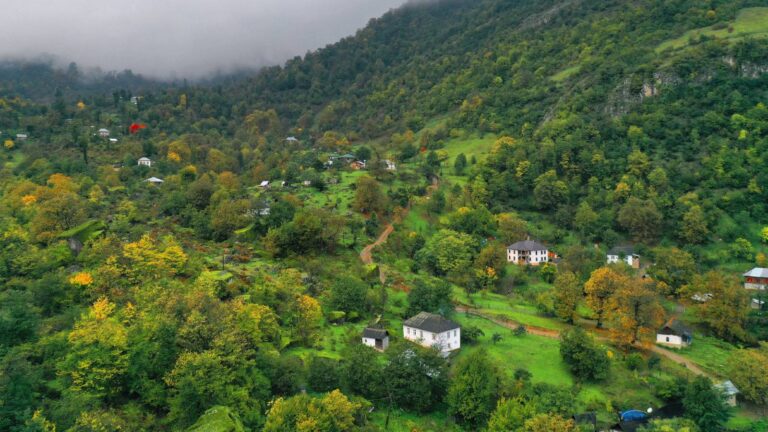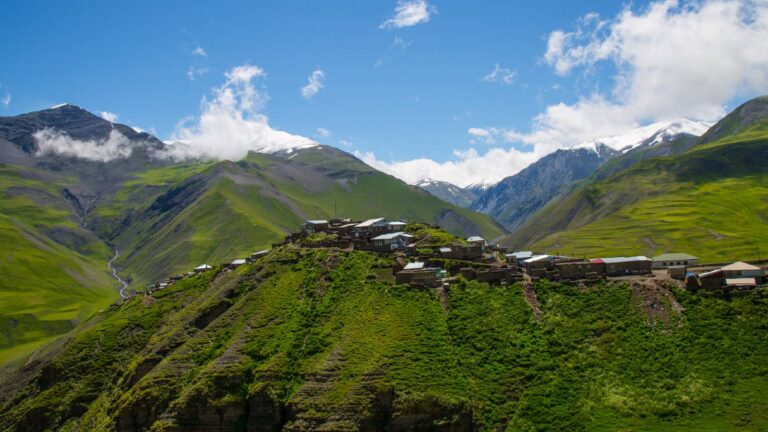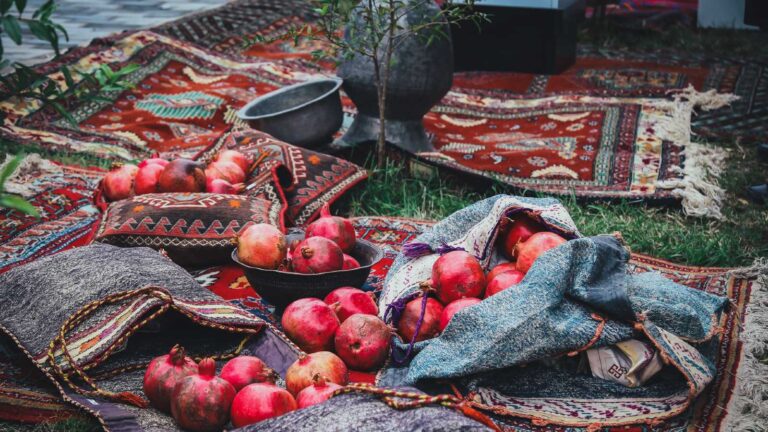By Plane
Currently, the only way of getting to Nakhchivan is by taking one of several daily flights from Baku. The flight time is about one hour. However in the future a land corridor is planned to connect the territory with the rest of Azerbaijan, making rail and road travel there possible.
Nakhchivan City has enough historical and cultural sights to spend an excellent day exploring (see history section). Just outside Nakhchivan City is Duzdag, a former salt mine turned into a first-class resort for treating respiratory diseases.
In the mountains to the north of Nakhchivan City, Batabat lake in Shahbuz State Reserve is a place of great natural beauty not to be missed. Nearby is Nakhchivan’s new winter resort, Agbulag, boasting several slopes that offer a unique skiing experience in the Lesser Caucasus Mountains. The region’s most famous mountain is Mt Ilandag, whose striking form is a symbol of Nakhchivan; you’ll see it best en route to Alinja Castle, or when travelling east to Ordubad.
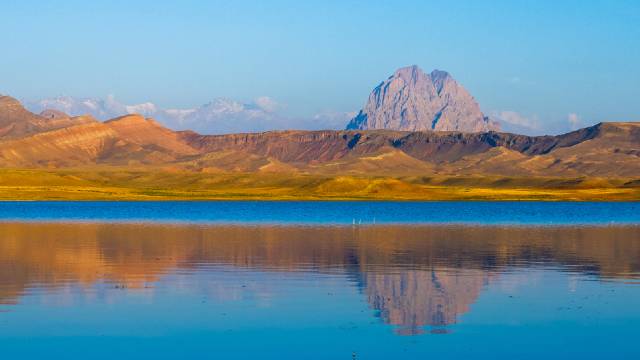
Batabat lake 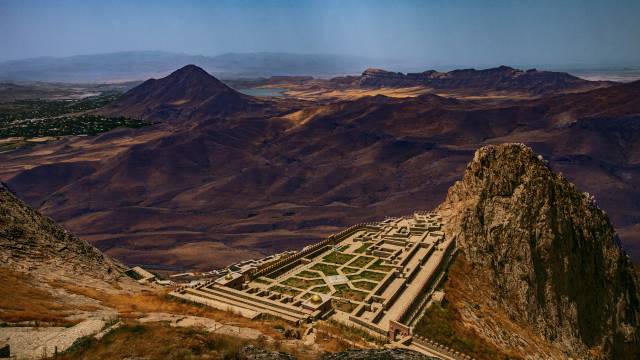
Alinja castle
Nakhchivan is also a great destination for birdwatchers where a number of unique species in Azerbaijan can be spotted, such as Radde’s Accentor, Mongolian Finch, Trumpeter Finch, Grey-necked Bunting, Upchers Warbler, White-throated Robin, and See-see Partridge.
Nakhchivan has many interesting historical sights, notably the 12th-century Mausoleum of Momine Khatun, a shining example of the Nakhchivan school of architecture, and the Nakhchivan Khans’ Palace, the former residence of the local rulers prior to region’s capture by the Russian Empire. Both of these sights are in Nakhchivan City, which also hosts the Tomb of Noah, who according to local legend settled in the region following the Great Flood. Indeed, Nakhchivan is known locally as ‘the land of Noah.’
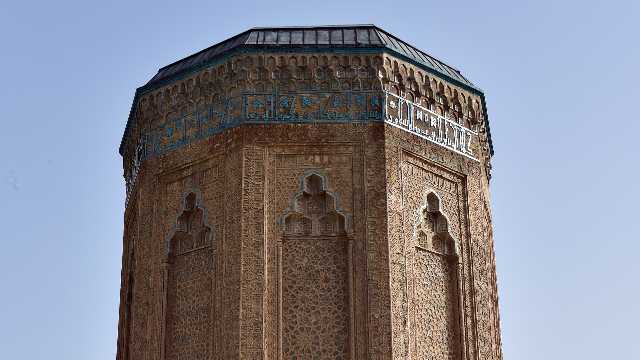
Momine Khatun mausoleum 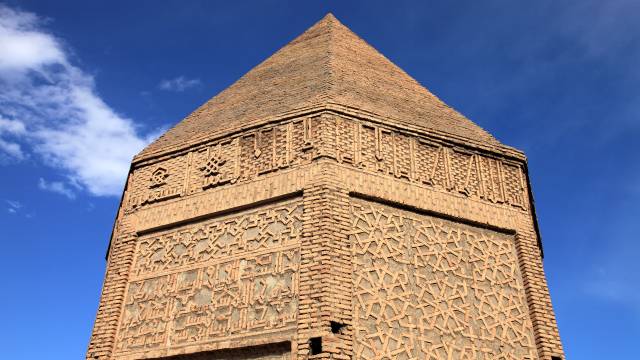
Yusuf bin Kuseyr mausoleum
A number of medieval tombs decorated with geometric patterns are scattered around Nakhchivan, most notably the Gulustan Tomb near the town of Julfa. In a remote part of central Nakhchivan, meanwhile, the newly reconstructed Alinja Castle sits alluringly at the top of Mt Alinja. Climbing up the long and exhausting steps is arduous but you’ll be rewarded with the most stunning views of Nakhchivan’s unique rocky mountainous and semi-desert terrain.
Ordubad in the far east of the territory is a historic city that was once a prominent stop on the Silk Road. There are a number of centuries-old mosques as well as house museums to outstanding former residents. Moreover, in the mountains above, near Nasirvaz village, are the extraordinary Gemigaya petroglyphs, some 1,500 of them dating to the Bronze Age.
Nakhchivan City hosts several good museums, notably the Nakhchivan Carpet Museum. Ordubad boasts house museums to local luminaries like the writer Mammad Said Ordubadi and the scientist Yusif Mammadaliyev.
Gastronomy
Gastronomes will enjoy trying the local cuisine as it differs somewhat from the rest of Azerbaijan, the diversity of its landscapes reflected in the richness of its produce. Try local specialties like arzuman kufte and the Ordubad omelette. The local plov is especially good too, and dough- and dairy-based dishes are popular. The city of Ordubad is also synonymous with delicious dried fruits and famed for its flavoursome lemons in particular.
Celebrations
Nakhchivan is one of the best places in Azerbaijan to experience the Novruz holiday, which celebrates the beginning of spring and the astronomical new year. This ancient holiday with its roots in Zoroastrianism is full of rituals and traditions, and in fact begins a month in advance as on the Four Tuesdays leading up to it Azerbaijanis make bonfires and celebrate one of the four elements: water, fire, earth and wind.
The climate of Nakhchivan is semi-arid and continental, meaning there are large temperature swings between warmer and colder months. The eastern region of Ordubad has a subtropical climate. The landscapes are a mix of rocky (grassy in some areas) mountains and valleys and semi-arid lowlands with a reddish colouration. The highest peak is Mt Gapichig at 3,904 metres. The Araz river flows along the south, forming a natural border with Iran.
Nakhchivan is famous for its abundance of mineral waters and produces some of the best bottled water in Azerbaijan, notable brands being Badamli and Sirab. Batabat is a high-mountain surrounded by stunning scenery. North of Ordubad lies the Zangazur National Park, an area of wild mountain scenery home to rare animals like the Caucasian leopard, bezoar goat, mouflon and various vultures and eagles.
Agriculture is the main activity in the region’s villages. Other notable industries include car manufacturing, dried fruits and meat packing. Nakhchivan is famous for its abundance of mineral water springs and hosts several notable brands of bottled water in Azerbaijan. Historically it was a centre of weaving, silk production, cotton-growing and craftsmanship.

